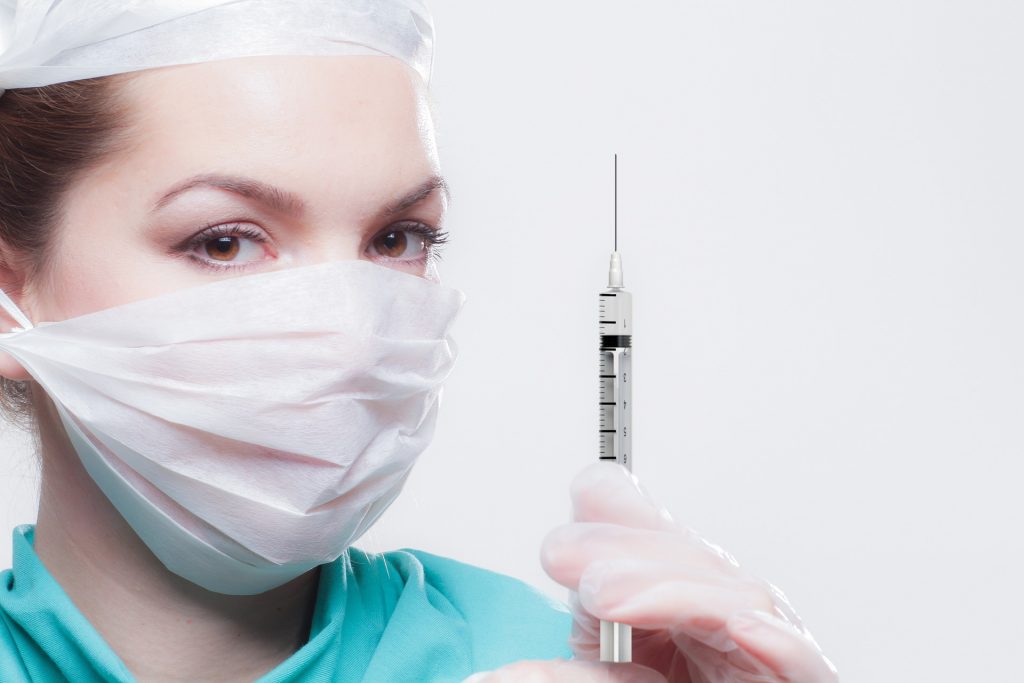Written by Shea Dockan and Edited by Josephine Chan

Human papillomavirus (HPV) is the most common sexually transmitted infection (STI) and has infected about 79 million Americans as of 2019 [1]. Those infected with HPV have varying severity of symptoms over the course of a number of years. Some may be asymptomatic over the course of infection and it will clear on its own, whereas others may develop physical manifestations such as genital warts or cancers. In fact, HPV is the leading cause of a type of cervical cancer in women, and are typically transmitted through men who have relatively mild symptoms related to infection. Consequently, getting an HPV vaccine is recommended for both males and females [2].
The HPV vaccine was first introduced in 2006 and is recommended for everyone around the ages of 11 to 12 [3]. The HPV vaccine is a multi-dose vaccine that requires individuals to receive doses six to twelve months apart from each other [3]. Starting the first dosage around age 11 would require individuals to receive only one follow-up shot. If the vaccine is given between the ages of 15 to 26, then three doses will be given, and is not recommended for people over the age of 26 to receive the vaccine as there are less benefits since most people have been exposed to HPV by this time [3].
A study from Sweden tracked the incidence of HPV infection in women, who were between the ages of 10 and 30, from 2006 through 2017. Comparing the time of vaccination for the women versus HPV infections, they found that among the women who received a vaccination before the age of 30 had a cumulative incidence of infection of about 47 in every 100,000 persons. Whereas the incidence of infection of women at 30 years of age who had not received a vaccine was about 94 per 100,000 persons. They concluded that the likelihood of cervical cancer was nearly double amongst people who had not been vaccinated compared to those who had [4].
Another study in 2011 was based on men, and looked at the efficiency of the HPV vaccine in preventing genital lesions, which are characteristic of infections in males. They found that of 4065 individuals enrolled in the study, 36 of those who had received the vaccination developed then genital warts, whereas 89 of those that did not receive a vaccine showed a manifestation of the infection. As a whole, researchers determined that the observed efficiency of the vaccine to prevent infection by HPV was about 60.2% [2]. Both of these studies show that the HPV vaccine is relatively efficient in reducing the chances of contracting the infection, as based on the manifestation of symptoms.
Programs throughout the U.S., such as “Vaccines for Children” that strive to provide free vaccinations for individuals under the age of 18 who may not have access to general healthcare [5]. The percentage of the population in the U.S. that receives the HPV vaccine is relatively low, with only 57% of females between the ages of 13 and 17 years old receiving their first dosage [5].The mixed messages about the efficiency and safety of the HPV vaccine plays a large role in why so few teenage girls have received it. Doctors’ offices do not always push for it, as some healthcare professionals believe that it is less urgent to get in comparison to other vaccines [5]. However, it is of great importance to receive this vaccine during teenage years as the chances for exposure to HPV drastically increase as you age. For those between the ages of 11 to 26, and have not received the vaccine, consider your options and weigh the risks of infections carefully with your health provider.
References:
- “STD Facts – Human Papillomavirus (HPV).” Centers for Disease Control and Prevention, Centers for Disease Control and Prevention, 20 Aug. 2019, http://www.cdc.gov/std/hpv/stdfact-hpv.htm. Accessed 31 Oct. 2020.
- Giuliano, A., Palefsky, J. M., Goldstone, S., Moreira Jr, E. D., Penny, M. E., Aranda, C., Vardas, E., Moi, H., Jessen, H., Hillman, R., Chang Y., Ferris, D. (2011). Efficacy of Quadrivalent HPV Vaccine against HPV Infection and Disease in Males. New England Journal of Medicine, 364:401-411.
- “What Everyone Should Know.” Centers for Disease Control and Prevention, Centers for Disease Control and Prevention, 17 Mar. 2020, https://www.cdc.gov/vaccines/vpd/hpv/public/index.html. Accessed 31 Oct. 2020.
- Lei, J., Ploner, A., Elfstrom, K. M., Wang, J., Roth, A., Fang, F., Sundstrom, K., Dillner, J., Sparen, Par. (2020). HPV Vaccination and the Risk of Invasive Cervical Cancer. New England Journal of Medicine, 383:1340-1348.
- Schuchat, A. (2015). HPV “Coverage”. New England Journal of Medicine, 373:775-776.
